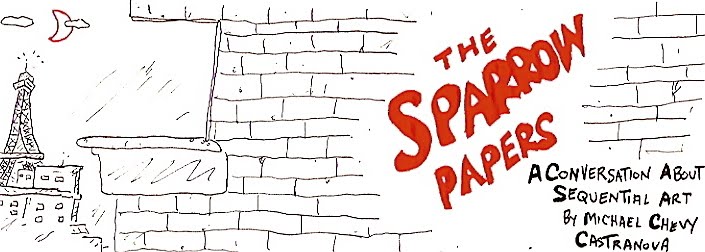 “Daddy” and Asp slain! Cut down in a vicious battle!
“Daddy” and Asp slain! Cut down in a vicious battle!But the mysterious giant, Punjab, finds their bodies, rescues them! He brings them back to life!
Though surely the local newspaper we received when I was a child carried Little Orphan Annie, I don’t remember it. (And I read every strip, from the top of the newspaper page to the bottom.)
What I do recall was reading Annie’s adventures from the 1940s, collected in a battered Big Little Book I discovered at grandparents’ house. (How they came by it I only can guess: My grandfather read racy crime novels, and my grandmother wrote what we’d now call romance fiction.)
The stories in that tiny book — with text on the left page and Harold Gray’s art on the facing page — certainly were more interesting than Annie’s goings-on by the 1960s, what I would have seen in the local paper. They definitely were scarier, and I don’t just mean Gray’s bleak, sinister drawings packed with deep shadows and malevolent, gloating bad guys.
Take a look through the reprinted Annie collections from the 1930s and ’40s. In one story, from 1937, the Asp throws an obviously terrified baby pig into the open jaws of an immense alligator … just to make a point to Annie to be careful. And many, many times abandoned, slip-of-a-girl Annie is separated from her dog and “Daddy” Warbucks, and is smacked and hit, tied up and trapped. The only reason people today must recall Annie as optimistic is because they’re confused with that musical. (“The sun’ll come out ta-marraw,” etc.)
Sure, Annie the protagonist hoped for the best. But as a strip from March 1936 reminds us, “she walks alone.” And “it’s just as well to keep an eye on ‘smart’ men” as our valuable possessions tend to go missing when they’re around (August 1939). And “Success is only for the few who can ignore the jeers of the mass (sic)” (April 1936).
And then there was Sandy, with the body of a wolf and the leering skull of a person. Creepy.
Doesn’t sound all that cheery, does it? But Gray was a master, in story and art, of atmosphere (even if his anti-New Deal sentiments could be jarring). Jay Maeder and Ted Slampyak’s current colorful version of Annie has tried to carry on, but the era of the adventure strip apparently has passed. Today’s newspaper readers, the few that remain, only have the attention span for a quick, faint joke, then are gone.
Or so we’re told by the newspaper editors who make the selections.
As someone who grew up in love with those adventure strips, I say that’s too bad for all of us.

No comments:
Post a Comment